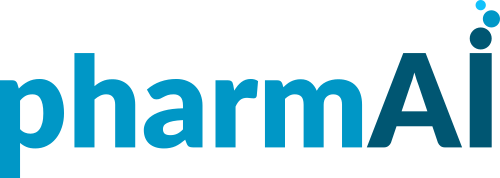pharmai / Plip
Programming Languages
Projects that are alternatives of or similar to Plip
Protein-Ligand Interaction Profiler (PLIP)
Analyze noncovalent protein-ligand interactions in 3D structures with ease.

| Use Case | Web Server | Docker | Singularity | Python Module |
|---|---|---|---|---|
| "I want to analyze my protein-ligand complex!" | ✔️ | ✔️ | :yellow_circle: | ❌ |
| "I want to analyze a billion protein-ligand complexes!" | ❌ | :yellow_circle: | ✔️ | :yellow_circle: |
| "I love the Linux command line and want to build a workflow around PLIP!" | ❌ | ✔️ | ✔️ | :yellow_circle: |
| "I'm a Python programmer and want to use PLIP in my project!" | ❌ | :yellow_circle: | :yellow_circle: | ✔️ |
Quickstart
If you have Docker installed, you can run a PLIP analysis for the structure 1vsn with the following shell command:
On Linux / MacOS:
$ docker run --rm \
-v ${PWD}:/results \
-w /results \
-u $(id -u ${USER}):$(id -g ${USER}) \
pharmai/plip:latest -i 1s3v -yv
On Windows:
$ docker run --rm \
-v ${PWD}:/results \
-w /results \
-u $(id -u ${USER}):$(id -g ${USER}) \
pharmai/plip:latest -i 1s3v -yv
The equivalent command for our pre-built Singularity image for Linux (available under Releases) is as follows:
$ ./plip.simg -i 1vsn -yv
Singularity allows to use PLIP with ease in HPC environments. Note that you need to have Singularity installed on your base system.
Usage
This README provides instructions for setup and using basic functions of PLIP. For more details, see the Documentation.
1. (optional) Clone the repository
Open a new system terminal and clone this repository using
$ git clone https://github.com/pharmai/plip.git
2. Install PLIP
Containerized Image (recommended)
❗️ We ship PLIP as a pre-built containers for multiple architectures (amd64/ARM), available on the Docker Hub or as pre-built Singularity image under Releases.
From Source
If you cannot use the containerized bundle or want to use PLIP sources, make sure you have the following requirements installed:
- Python >= 3.6.9
- OpenBabel >= 3.0.0
- PyMOL >= 2.3.0 with Python bindings (optional, for visualization only)
- ImageMagick >= 6.9 (optional)
Set your PYTHONPATH environment variable to the root directory of this repository.
Via PyPi
We deploy the PLIP package to PyPi. You can install PLIP as Python module with:
$ pip install plip
Note: Be aware that you still have to install all other dependencies and link them correctly.
3. Run PLIP
Command Line Tool
Run the plipcmd.py script inside the PLIP folder to detect, report, and visualize interactions. The following example creates a PYMOL visualization for the interactions between the inhibitor NFT and its target protein in the PDB structure 1vsn.
Note: If you have installed PLIP with python setup.py install or PyPi, you will not have to set an alias for the plip command.
$ alias plip='python ~/pliptool/plip/plipcmd.py'
$ mkdir /tmp/1vsn && cd /tmp/1vsn
$ plip -i 1vsn -yv
$ pymol 1VSN_NFT_A_283.pse
Python Module
In your terminal, add the PLIP repository to your PYTHONPATH variable. For our example, we also download a PDB file for testing.
$ export PYTHONPATH=~/plip:${PYTHONPATH}
$ cd /tmp && wget http://files.rcsb.org/download/1EVE.pdb
$ python
In python, import the PLIP modules, load a PDB structure and run the analysis. This small example shows how to print all numbers of residues involved in pi-stacking:
from plip.structure.preparation import PDBComplex
my_mol = PDBComplex()
my_mol.load_pdb('/tmp/1EVE.pdb') # Load the PDB file into PLIP class
print(my_mol) # Shows name of structure and ligand binding sites
my_bsid = 'E20:A:2001' # Unique binding site identifier (HetID:Chain:Position)
my_mol.analyze()
my_interactions = my_mol.interaction_sets[my_bsid] # Contains all interaction data
# Now print numbers of all residues taking part in pi-stacking
print([pistack.resnr for pistack in my_interactions.pistacking]) # Prints [84, 129]
4. Investigate the Results
PLIP offers various output formats, ranging from renderes images and PyMOL session files to human-readable text files and XML files. By default, all files are deposited in the working directory unless and output path is provided. For a full documentation of running options and output formats, please refer to the Documentation.
Versions and Branches
For production environments, you should use the latest tagged commit from the master branch or refer to the Releases page. Newer commits from the master and development branch may contain new but untested and not documented features.
Contributors
- Sebastian Salentin (original author) | github.com/ssalentin
- Joachim Haupt | github.com/vjhaupt
- Melissa F. Adasme Mora | github.com/madasme
- Alexandre Mestiashvili | github.com/mestia
- Christoph Leberecht | github.com/cleberecht
- Florian Kaiser | github.com/fkaiserbio
PLIP Web Server
Visit our PLIP Web Server on plip.biotec.tu-dresden.de/plip-web.
License Information
PLIP is published under the GNU GPLv2. For more information, please read the LICENSE.txt file.
Using PLIP in your commercial or non-commercial project is generally possible when giving a proper reference to this project and the publication in NAR.
Citation Information
If you are using PLIP in your work, please cite
Salentin,S. et al. PLIP: fully automated protein-ligand interaction profiler. Nucl. Acids Res. (1 July 2015) 43 (W1): W443-W447. doi: 10.1093/nar/gkv315
FAQ
I try to run PLIP, but I'm getting an error message saying: ValueError: [...] is not a recognised Open Babel descriptor type
Make sure OpenBabel is correctly installed. This error can occur if the installed Python bindings don't match the OpenBabel version on your machine. We don't offer technical support for installation of third-party packages. For an instruction how to install Open Babel, please refer to their website.
I'm unsure on how to run PLIP and don't have much Linux experience.
You should consider running PLIP as Docker image, as we describe above.
PLIP is reporting different interactions on several runs!
Due to the non-deterministic nature on how hydrogen atoms can be added to the input structure, it cannot be guaranteed that each run returns exactly the same set of interactions. If you want to make sure to achieve consistent results, you can:
- protonate the input structure once with PLIP or your tool of preference
- run PLIP with
--nohydro
How does PLIP handle NMR structures?
By default PLIP uses the first model it sees in a PDB file. You can change this behavior with the flag --model.
Contact / Maintainer
As of April 2020 PLIP is now officially maintained by PharmAI GmbH. Do you have feature requests, found a bug or want to use PLIP in your project? Commercial support is available upon request.
Please get in touch: [email protected]





